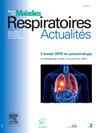Prise en charge des cancers bronchiques à petites cellules de stade localisé : actualisation
Q4 Medicine
引用次数: 0
Abstract
Limited-stage small cell lung cancer (LS-SCLC) represents 10-15% of all lung cancers, and because of its rapid tumor kinetics, less than a third of SCLC are discovered at limited stage. It has benefited less from therapeutic advances than non-small cell lung cancer (NSCLC). The different steps and modalities of its management are well defined and codified. They involve a comprehensive staging assessment using CT scans of the chest, abdomen, and pelvis, PET-CT scans, and ideally brain imaging using MRI to avoid missing a more extensive stage of the disease, which would significantly alter the treatment strategy. The treatment consists of a combination of chemotherapy with platinum/ etoposide and radiotherapy, possibly delivered in a hyperfractionated schedule with two daily sessions followed by immunotherapy. SCLC is particularly both chemosensitive and radiosensitive, so that the initial evaluation shows frequently a complete response, and prophylactic cranial irradiation (PCI) is then recommended. Even if hyperfractionated accelerated radiotherapy (HFART) at the dose of 45Gy in 30 fractions has given the best results, most clinicians use once-daily chemoradiation regimen (60-70Gy). Studies have evaluated dose escalation either with HFRAT or with conventional fractionation (66 to 70Gy). Several trials are currently investigating the addition of immunotherapy to chemoradiation, hippocampus sparing PCI or the omission of PCI.
局部小细胞肺癌的管理:更新
有限期小细胞肺癌(LS-SCLC)占所有肺癌的10-15%,由于其快速的肿瘤动力学,不到三分之一的SCLC在有限期被发现。与非小细胞肺癌(NSCLC)相比,它从治疗进展中获益较少。其管理的不同步骤和方式得到了很好的界定和编纂。它们包括使用胸部、腹部和骨盆的CT扫描进行全面的分期评估,PET-CT扫描,理想情况下使用MRI进行脑成像,以避免错过疾病的更广泛阶段,这将显著改变治疗策略。治疗包括化疗与铂/依托泊苷和放疗的组合,可能以每天两次的高分割时间表进行,然后进行免疫治疗。SCLC特别具有化学敏感性和放射敏感性,因此初步评估通常显示完全缓解,然后推荐预防性颅脑照射(PCI)。即使30次45Gy剂量的超分割加速放疗(hart)效果最好,大多数临床医生还是使用每日一次的放化疗方案(60-70Gy)。研究评估了HFRAT或常规分离(66至70Gy)的剂量递增。目前有几项试验正在研究在放化疗的基础上增加免疫治疗、保留海马体PCI或不进行PCI。
本文章由计算机程序翻译,如有差异,请以英文原文为准。
求助全文
约1分钟内获得全文
求助全文
来源期刊

Revue des Maladies Respiratoires Actualites
Medicine-Pulmonary and Respiratory Medicine
CiteScore
0.10
自引率
0.00%
发文量
671
 求助内容:
求助内容: 应助结果提醒方式:
应助结果提醒方式:


